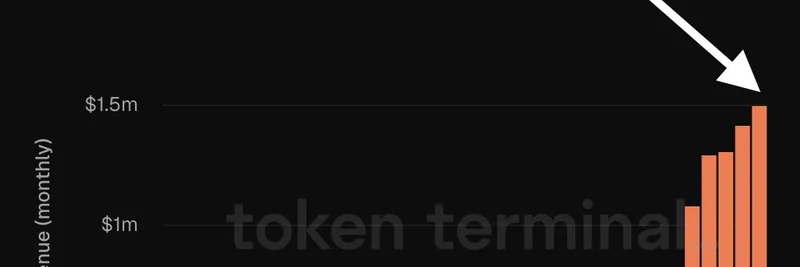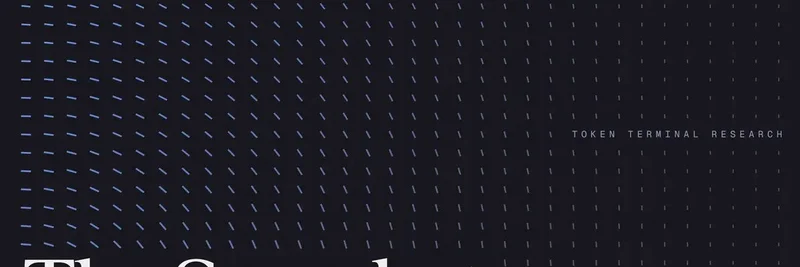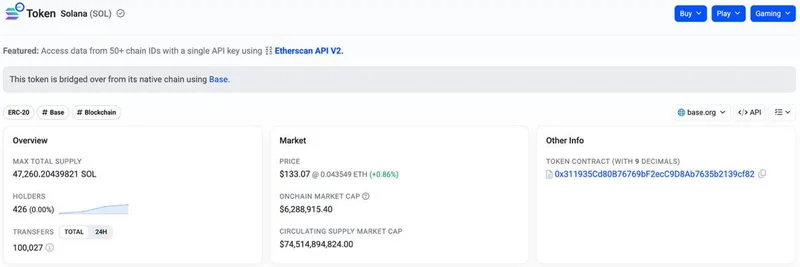In the fast-paced world of decentralized finance (DeFi), few stories capture attention like a protocol smashing its own records. Recently, Maple Finance, a leading platform for institutional lending on the blockchain, hit an all-time high in monthly revenue—clocking in at around $1.5 million for September 2025. That's a whopping 305% increase year-over-year (YoY), as highlighted in a recent tweet from Token Terminal.
Maple Finance 이해하기: 빠른 개요
If you're new to DeFi or just dipping your toes into the broader blockchain ecosystem, Maple Finance might sound like a fancy syrup brand—but it's far from that. Launched in 2021, Maple is a DeFi protocol built on Ethereum and Solana that specializes in undercollateralized loans. Unlike traditional lending platforms where you might need to over-collateralize your assets (think putting up $150 worth of crypto to borrow $100), Maple caters to institutions with credit assessments, allowing for more efficient capital use.
This model has attracted big players in the crypto space, including funds and market makers. By connecting borrowers with lenders through on-chain pools, Maple generates revenue primarily from fees on loans and interest spreads. It's like a bridge between traditional finance's credit systems and the transparency of blockchain tech.
Breaking Down the Revenue Surge
Looking at the data from Token Terminal, Maple's revenue trajectory tells a story of resilience and growth. Starting from humble beginnings in early 2023—where monthly figures hovered near zero—the protocol has steadily climbed. By mid-2024, things started picking up, and fast-forward to September 2025, we're seeing that peak of $1.5 million.
What fueled this 305% YoY jump? A few factors stand out:
- Market Recovery: The broader crypto market has been on an upswing, with Bitcoin and Ethereum prices stabilizing and attracting more institutional interest. This means more capital flowing into DeFi protocols like Maple.
- Expansion to Solana: Maple's integration with Solana has opened doors to faster, cheaper transactions, appealing to a wider audience beyond Ethereum loyalists.
- Product Innovations: Recent updates, including new lending pools and risk management tools, have boosted user confidence and activity.
For meme token enthusiasts, this is particularly interesting because strong DeFi infrastructure like Maple provides the liquidity and borrowing options that can supercharge meme projects. Need to borrow against your holdings to ape into the next hot meme? Platforms like this make it possible without liquidating your assets.
Why This Matters for the Meme Token Community
At Meme Insider, we focus on meme tokens, but DeFi growth like Maple's has ripple effects. Meme tokens thrive on hype, liquidity, and easy access to capital. When protocols like Maple hit revenue highs, it signals a maturing ecosystem where institutions are getting more involved. This could mean more stable liquidity pools for meme trading, reduced volatility in borrowing rates, and even partnerships that blend meme culture with serious finance.
Imagine a world where your favorite dog-themed token gets institutional backing through Maple-style loans—it's not as far-fetched as it sounds. Plus, with revenue soaring, Maple's native token, MPL, might see increased utility and value, offering indirect benefits to the broader token economy.
Looking Ahead: What's Next for Maple?
As we head into Q4 2025, keep an eye on Maple's metrics. If this growth continues, we could see even higher revenues, especially if global economic conditions favor crypto investments. For blockchain practitioners, this is a reminder to diversify beyond pure meme plays—exploring DeFi lending can hedge risks and amplify gains.
If you're curious about diving deeper, check out Maple Finance's official site here or follow Token Terminal for more data-driven insights. Stay tuned to Meme Insider for how these DeFi developments intersect with the wild world of meme tokens. What's your take on this surge—bullish for memes? Drop your thoughts in the comments!




